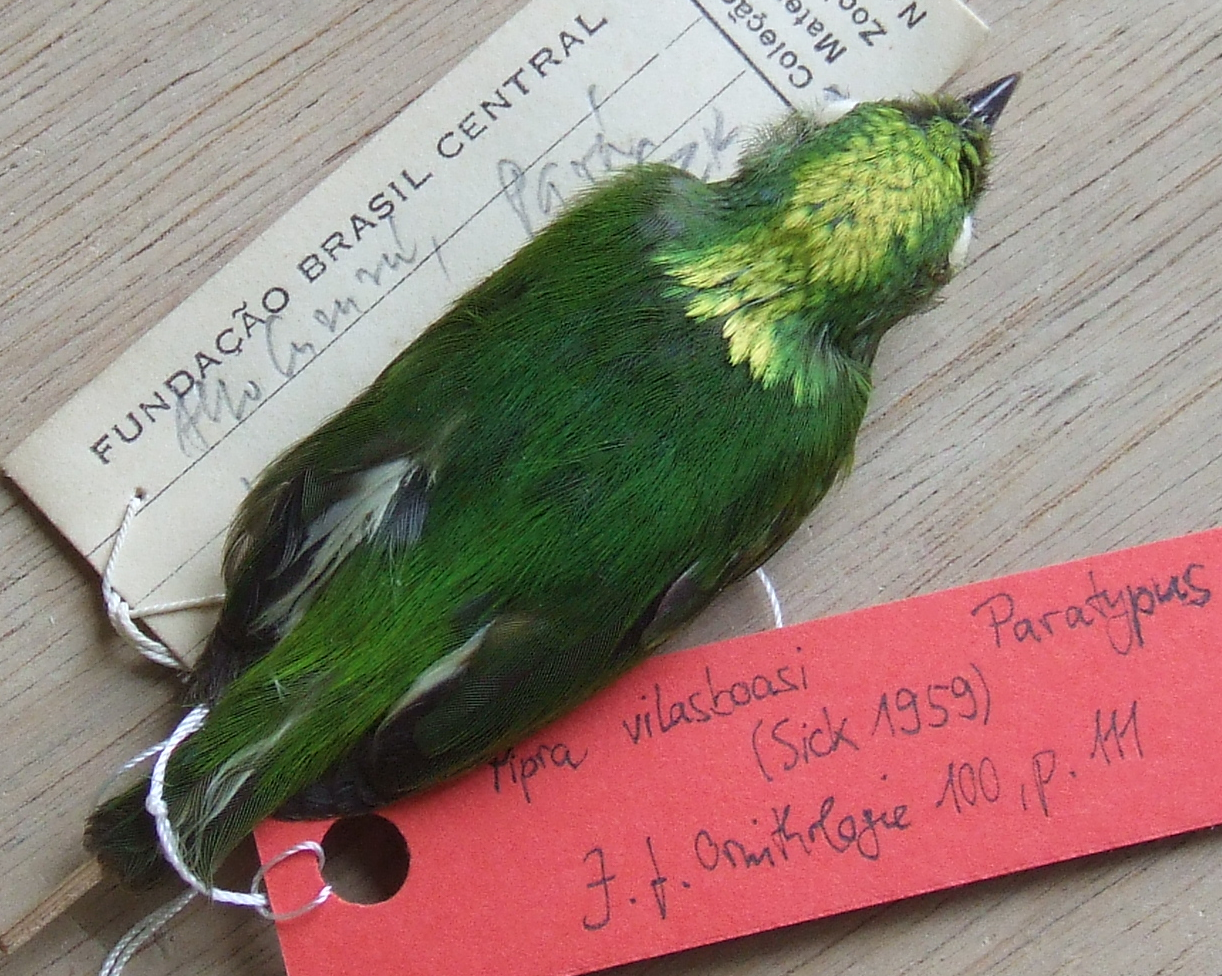
Scientists have made a startling discovery about a population of yellow-headed birds from the Amazon rainforest. The birds, known as golden-crowned manakins, are the first-known avian species to have originated from the hybrid offspring of two other living species.
The golden-crowned manakin is named for the yellow crown atop its green body. It inhabits a small range within the Amazon rainforest in Brazil. Now researchers at the University of Toronto Scarborough have demonstrated through genetic testing that the species originally started as a hybrid of two other species, and then evolved to be its own unique creature.
The golden-crowned manakin was not suspected to hold a secret when scientists discovered it in 1957, and there was no record of it again until 2002. Part of the reason that people didn't record sightings was, as the Cornell Lab of Ornithology writes, they didn't know they were looking at a species distinct from other local birds. They thought that the birds were unremarkable hybrids of other local avians and would not form their own population. But genetic testing soon demonstrated that the golden-crowned manakin was its own, distinct species.
Still, that finding didn't explain its origins. To answer this question, the team of scientists from Canada gathered feathers from the region of Brazil inhabited by the golden-crowned manakin and sequenced most of its genomes. They also did the same for the opal-crowned and snow-capped manakins. Because these two species live in close proximity to the golden-crowned species and also behave and look similarly, the scientists figured that they must be related in some way.
Comparing the sequenced genomes of all three species led researchers to a surprising conclusion. Rather than being three somewhat similar species, the opal-crowned and snow-capped manakins were the parent species of the golden-crowned manakins. The two parent species mated and established a population of hybrids around 180,000 years ago, the data showed. That population grew and sustained itself, becoming its own species and later even evolving a crown of a different color.
The researchers also used a microscope to examine the head feathers of the three species. Despite being bright yellow, the feathers on the golden-crowned manakin appeared to have structures intermediate in shape between the two other species. The finding lends further support to the DNA analysis.
The research was published yesterday in the Proceedings of the National Academy of Sciences.

A Strange Phenomenon
This phenomenon of speciation has never been recorded before in birds. For hybridization to even begin, the two parent species must be closely related. When they are too genetically different from each other, independent species may be unable to produce fertile offspring if they mate. But because snow-capped manakins and opal-crowned manakins diverged only 300,000 years ago from their common ancestor—a short amount of time, in evolutionary terms—their offspring could continue their own lineage and evolve. If the species had diverged too long ago, they wouldn't have compatible genetics.
The resulting population can also interbreed with either parent species and become more genetically similar to one or the other. In this case, the golden-crowned is 80 percent opal-crowned and 20 percent snow-capped, according to the DNA comparisons detailed in the new study.
Hybridization is a fairly well-documented phenomenon, but when the resulting animal truly distinguishes itself from its parents the hybrid is harder to pin down. As a group of hybrids start to form their own species, they start breeding primarily among themselves and isolate their genes from their parent species.
But geography had to favor them to become their own species. "Without geographic isolation, it's very likely this would never have happened, because you don't see the hybrids evolving as separate species in other areas where both parental species meet," new-world bird expert Jason Weir, an associate professor in biological sciences at the University of Toronto Scarborough, said in a press release. Weir was one of the authors on the study.

Hybridization has helped form a variety of species before, and many species that we know today have crossed evolutionary paths with each other. But the golden-crowned manakin is unique because it is the first documented bird species that is known to have originated from two living bird species.
And the species is no longer the same as it would have been if its two parent species interbred today. They've been their own population long enough to have developed unique traits, like their golden crown.
In addition to revealing a rare phenomenon, the study also raises intriguing questions about what other animal species might also be hybrids.
SaveSave
SaveSaveSaveSaveSaveSave
Uncommon Knowledge
Newsweek is committed to challenging conventional wisdom and finding connections in the search for common ground.
Newsweek is committed to challenging conventional wisdom and finding connections in the search for common ground.
About the writer
Kristin is a science journalist in New York who has lived in DC, Boston, LA, and the SF Bay Area. ... Read more
To read how Newsweek uses AI as a newsroom tool, Click here.





